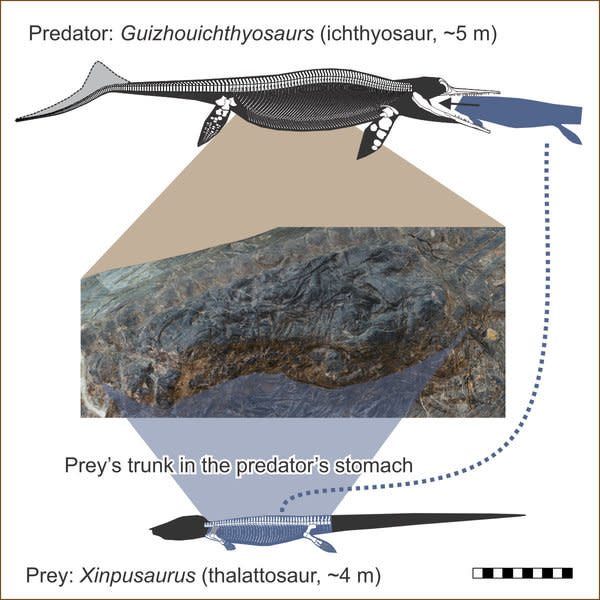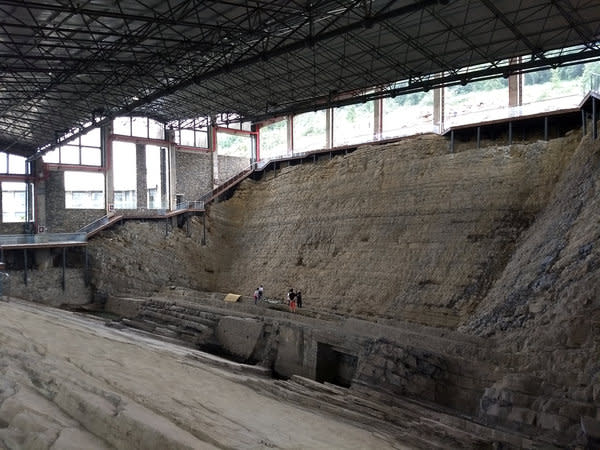Prehistoric apex predator fossil found with giant lizard in its stomach

A prehistoric apex predator that roamed the oceans 240 million years ago has been unearthed with a giant lizard in its stomach.
Scientists believe it is the biggest fossil ever found in a creature's stomach and provides the oldest direct evidence ichthyosaurs were apex predators – large animals at the very top of the food chain.
The 15-foot ichthyosaur's powerful jaws enabled it to rip its prey to bits – despite the lizard being only slightly smaller than the predator.
Read more: New species of dinosaur discovered on the Isle of Wight

Co-author Professor Ryosuke Motani, of the University of California, Davis, said: "At first, we just didn't believe it.
“But after spending several years visiting the dig site and looking at the same specimens, we finally were able to 'swallow' what we were seeing."
She added: "We have never found articulated remains of a large reptile in the stomach of gigantic predators from the age of dinosaurs – such as marine reptiles and dinosaurs.

"We always guessed from tooth shape and jaw design that these predators must have fed on large prey - but now we have direct evidence that they did.”
Read more: 'Terror crocodile' the size of a London bus had teeth as big as bananas
Motani predicted the Triassic era ichthyosaur died soon after eating the lizard, which meant stomach acid did not have time to begin digesting its prey.
The dolphin-like Guizhouichthyosaurus, part of the ichthyosaur genus, was unearthed at a quarry in Guizhou in southwestern China in 2010.
The study published in iScience revealed the almost complete skeleton of the predator was remarkably preserved - and contained the part of the unlucky 12-foot long thalattosaur in its stomach.
Named Xinpusaurus xingyiensis, the thalattosaur was identified from a large block of smaller bones that bulge from the other animal's abdomen.

It had a slender, lizard-like frame and four paddling limbs that were still partially attached to its body.
The thalattosaur was snapped in three, with the middle section found in the predator’s stomach.
Its tail was discovered a few yards away but the head has not been found.
Scientists believe the giant ichthyosaurs appeared in the oceans after the Permian mass extinction 250 million years ago, with some growing to 60 feet.

Read more: 77 million-year-old fossil in Canada reveals dinosaurs got cancer too
They had fish-like bodies similar to modern tuna – but breathed air like dolphins and whales.
Their small, peg-like teeth had previously been thought to be adapted for grasping small, soft prey.
Carnivores that consume large animals are often assumed to have huge teeth adapted for slicing them up.


